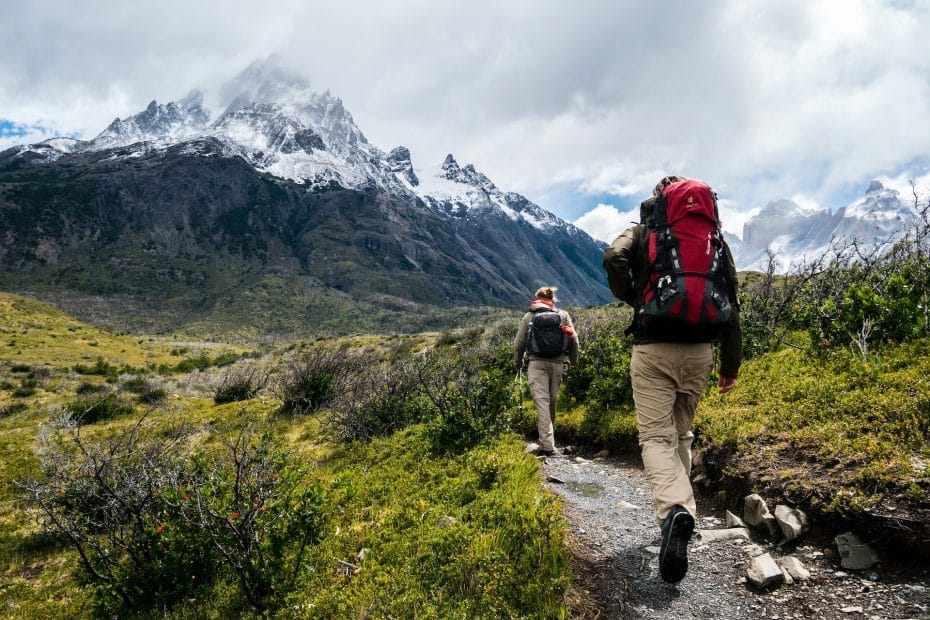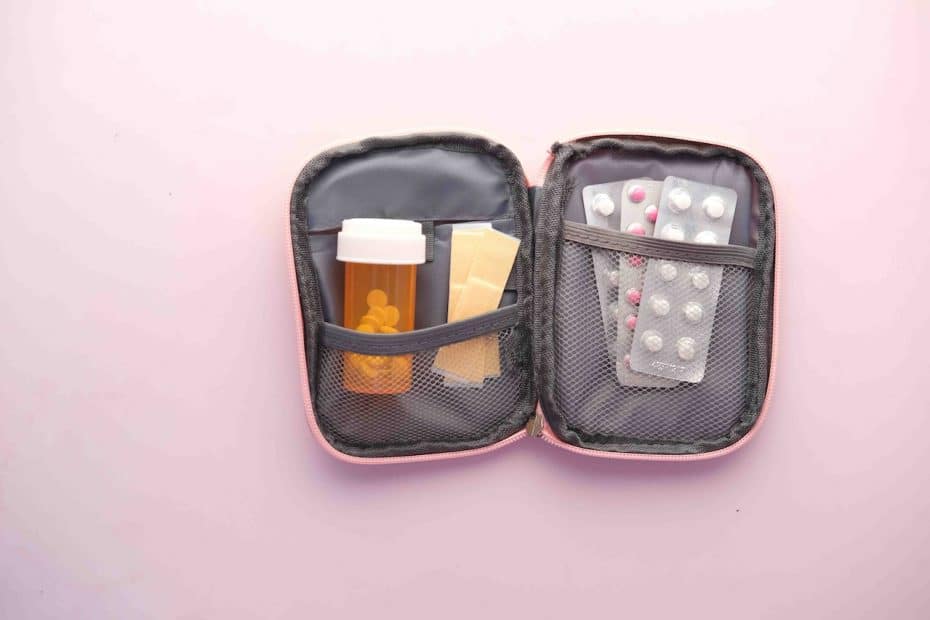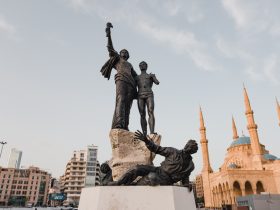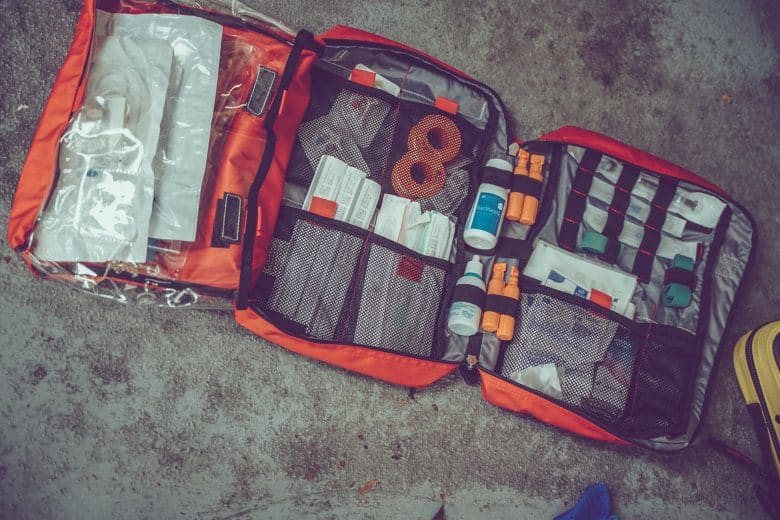Whether planning an exotic getaway or a simple weekend road trip, having a well-stocked travel first-aid kit can make all the difference when unexpected situations arise. When you’re away from home, it’s essential to have immediate access to accurate and reliable medical supplies to promptly attend to any injuries or illnesses that may occur during your journey. This blog post will provide you with a comprehensive checklist of items you should consider including in your travel first-aid kit, as well as additional recommendations for specific destinations or activities.

Why Should You Have a Travel First-Aid Kit?
A travel first-aid kit is essential for addressing minor injuries or health issues that may arise during your trips. It allows you to be proactive in taking care of yourself and your companions in an unfamiliar environment where medical services may not be readily accessible. Moreover, a well-stocked first-aid kit can provide peace of mind and confidence during your travels, knowing you are prepared for potential emergencies.
Furthermore, having a travel first-aid kit is not only useful in emergency situations but also helpful for managing common inconveniences like headaches, blisters, or sunburns. Quick access to necessary supplies will minimize disruptions to your trip, allowing you to focus on enjoying the experience rather than struggling with discomfort or seeking help.
When it comes to choosing the right first-aid kit for your travels, it’s important to consider the type of trip you have planned and the specific needs that may arise based on your destination and activities. For instance, if you’re going on a hiking or camping adventure, you might need a more comprehensive kit that includes supplies for treating insect bites, burns, or sprains. On the other hand, if you’re taking a city break or a beach vacation, a smaller, more compact kit with essentials for minor cuts and scrapes might suffice.
Additionally, think about any personal requirements based on pre-existing conditions or specific medications you take regularly. Be sure to pack any prescription medications along with over-the-counter remedies such as pain relievers or antacids.
What Kind of Travel First-Aid Kit Should I Take?
Personally, I think it’s best to design your first-aid kit around the specifics of your adventure; that way, you won’t be compromising space and weight in your luggage.
When faced with the choice of buying a pre-made first-aid kit, such as this one, or creating and customizing your own, you’ll need to evaluate your needs and requirements. A store-bought kit may save you time and effort, as it contains most standard items for almost any situation.
However, if, like me, you have unique needs for specific items based on your health conditions or travel plans, creating a customized kit tailored to those requirements might be the better option.
Essential Items to Include in Your Travel First-Aid Kit

You can basically group the necessary items into three categories.
- Firstly, medical supplies are essential components to have on hand. These items can address minor injuries and emergencies. Examples include adhesive bandages, gauze pads, wound dressings, medical tape, scissors, tweezers, safety pins, a digital thermometer, and antiseptic wipes.
- Secondly, actual medicines – both over-the-counter and prescription medications – should also be part of your travel first-aid kit. They can provide relief from common ailments or help manage chronic conditions while away from home. For instance, include pain relievers such as ibuprofen or acetaminophen, antacids for stomach discomfort, anti-nausea drugs for motion sickness, and anti-diarrheal medication. Also, pack any necessary prescription medications you regularly take; remember to keep them in their original containers with proper labeling to avoid confusion or delays at security checkpoints.
- Lastly, personal hygiene items are essential to maintain cleanliness and comfort during travel. These items may not be readily available or familiar at your destination. Some examples are individually wrapped hand sanitizer wipes or gel, facial tissues or toilet paper (in case restrooms are not adequately stocked), disposable toothbrushes and toothpaste (in case not provided by lodgings), feminine hygiene products for women travelers, and sexual health items like condoms.
A Hypochondriac’s Guide to Packing a Perfect Travel First-Aid Kit
So, I may not be a textbook hypochondriac, as I actually do have chronic conditions. This means that I need to be extra cautious about my health when I travel.
After my heart valve replacement surgery, I started taking blood thinners, which means I need to watch my diet, take medication daily, and keep an eye on my blood coagulation. It’s not exactly a travel-friendly condition, especially since I blog about travel for a living, but I’m alive!
When going on shorter trips, say under a week, I mainly need to include enough medication in my kit to cover the duration of the trip along with the typical emergency items such as band-aids and gauze.
For more extended journeys, things can get a bit trickier. In addition to the usual items, I also have to pack my blood coagulation monitor, blood clotting medicine (for times when I might get injured or if my blood gets too thin), and heparin syringes (for when my blood gets too thick). As you can imagine, airport security checks are just delightful!
I also find it helpful to travel with two kits: the main one, where I keep my medication, blood monitor, and things I would likely need where I’m staying, and a smaller, emergency-focused one that I take with me when I’m out and about.
30 Items for the Ultimate Travel First-Aid Kid Checklist
- Adhesive bandages
- Antiseptic wipes
- Tweezers
- Small scissors
- Gauze pads
- Medical tape
- Elastic bandage
- Pain relievers (ibuprofen or acetaminophen)
- Digital thermometer
- Instant cold packs
- Eye drops
- Hydrocortisone cream
- Antibacterial ointment
- Antihistamine tablets
- Insect repellent
- Sunscreen
- Aloe vera gel
- Oral rehydration salts
- Diarrhea medication (loperamide)
- Motion sickness medication
- Small flashlight
- Whistle
- Emergency blanket
- Safety pins
- Nitrile gloves
- Face masks
- Burn cream
- Moleskin for blisters
- Cotton balls or swabs
- Nail clippers/file

























Leave a Reply
View Comments